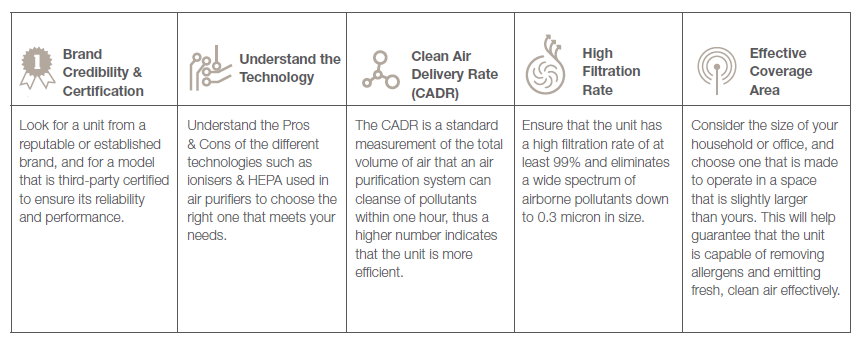Improve Your Air Quality with Atmosphere SKY

When we consider that a normal Malaysian spends up to 89% of their life indoors* and 69% of this indoor time is spent in homes*, how we manage the quality of air around us can have a significant effect on our quality of life.
*Based on a study conducted by the Department of Occupational Safety and Health Malaysia.
How Clean is the Air in Your Home?
Many of us assume that air pollution like smog, ozone or haze is left outside whenever we enter our homes, but the truth is that the air inside is likely to be even more polluted. In addition to the pollutants and particulates that seep in from outside, the air inside your home may be contaminated by volatile organic compounds (VOCs) released from everything from paint or varnish on our furniture to the potent mixtures found in our cleaning solutions.
Other toxins such as radon, mould and combustible pollutants may also be present. Some pollutants are tracked into the home through your clothing, your skin, and even on the soles of your shoes. Others arrive via a new piece of furniture, carpet cleaners, or a coat of paint on the wall. All this results in indoor air quality usually being 5 times worse than it is outside!
Managing Indoor Air Quality Effectively
The good news is that there are a number of easy and simple things you can do to improve the air quality in your home.
Clean Regularly
That fine layer of dust that you see around your home contains a lot more than just dirt, so one of the best things you can do is clean regularly. You should also try to wash towels, curtains and bed sheets at least once a week and vacuum and mop regularly too, as floors collect all of the pollutants that don’t stay suspended.
Ventilation & Circulation
Try to regularly open your windows and allow air to flow through your home at least once a day. Condensation and mould love tight spots where there is poor air circulation, so leave around two inches of space between your furniture and the walls. Wardrobes should be placed against internal walls in the bedroom, which will be warmer than external walls and less likely to cause damp and mould problems.
Air Treatment System/ Air Purifier
Air filters/ purification systems can make a significant impact in helping you improve the quality of the air you breathe and are well worth an investment. It’s important to choose wisely from the various models that are available in the market, so look for High Efficiency Particulate Air or HEPA air purifiers which are designed to reduce harmful particles and pollutants.
Choosing an Air Purifier That’s Right for You
While the marketplace is inundated with choices when it comes to buying an air purifier, choosing the right one isn’t rocket science. Just keep in mind these five tips to ensure you make the right purchase:
Brand Credibility & Certification
Look for a unit from a reputable or established brand, and for a model that is third-party certified to ensure its reliability and performance.
Understand the Technology
Understand the Pros & Cons of the different technologies such as ionisers & HEPA used in air purifiers to choose the right one that meets your needs.
Clean Air Delivery Rate (CADR)
The CARD is a standard measurement of the total volume of air that an air purification system can cleanse of pollutants within one hour, thus a higher number indicates that the unit is more efficient.
High Filtration Rate
Ensure that the unit has a high filtration rate of at least 99% and eliminates a wide spectrum of airborne pollutants down to 0.3 micron in size.
Effective Coverage Area
Consider the size of your household or office, and choose one that is made to operate in a space that is slightly larger than yours. This will help guarantee that the unit is capable of removing allergens and emitting fresh, clean air effectively.

